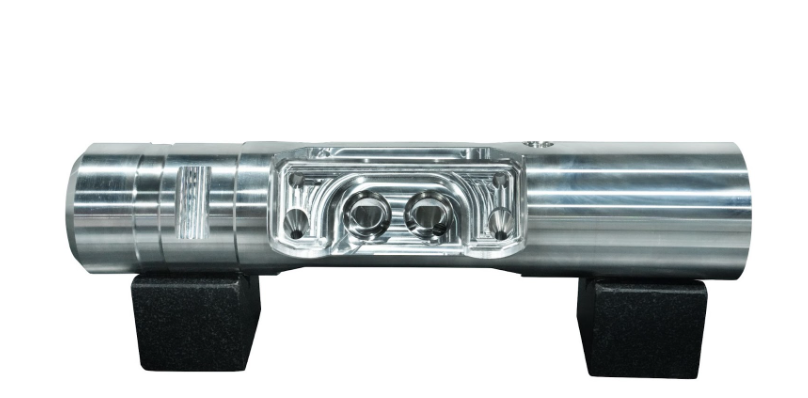Reliability and accuracy in each component are necessary in the contemporary manufacturing era. Two technologies, reverse engineering and CMM inspection, are forces that transform these into reality. Precision and accuracy are the utmost priorities at Accurate Edge.
This blog explains why these technologies are necessary and how they enhance manufacturing processes.
What is CMM Inspection?
CMM Inspection is a critical process to ensure that the parts meet specifications. CMM technology takes the physical geometrical characteristics of an item. The machine, through a probe, accurately measures a part’s size, shape, and surface. These are then compared to the design drawings or specifications.
Why is CMM Inspection Important?
CMM inspection allows the manufacturers to verify and confirm the accuracy of the parts. A slight miscalibration in dimensions will lead to operational failures or injuries in safety-related industries. Accurately measuring intricate shapes is crucial in aerospace, automotive, medical devices, and petroleum and gas industries.
CMM inspection offers the following benefits to companies, especially those that deal with intricate designs:
- High Accuracy: CMM can measure the most minor details, so all parts will be tolerable as required.
- Quick Inspection: By CMM inspection, manufacturers can rapidly inspect parts, and there will be a time-saving inspection without compromising high-quality standards.
- Better Product Quality: With the early identification and rectification of deviations in the manufacturing process, the overall quality of the product improves.
- Simplified Production: The computer-based CMM process reduces the need for hand checking, and production cycles speed up.
We utilize high-technology CMM at Accurate Edge to manufacture parts to specifications. It is invaluable to providing consistency in quality to industries that require advanced components.
What is Reverse Engineering?
Reverse engineering entails duplicating parts or products by examining their structure, function, and design. If original designs or specifications are lacking or require upgrading, reverse engineering assists manufacturers in replicating them through available components.
This technology performs optimally when original design files are lost or outdated, and it is impossible to create replacement parts. The available part is measured and analyzed cautiously when reverse engineering is performed. Then, a 3D digital model or CAD sketch duplicates the component.
Why is Reverse Engineering Necessary?
Reverse engineering is helpful in various situations, including:
- Replicating Components: For damaged or lost original designs, reverse engineering enables the production of new parts.
- Refining Current Designs: Reverse engineering optimizes the components regarding performance, efficiency, or price.
- Refurbishing Obsolete Designs: In some cases, the earlier models may not be by modern standards of manufacture. Reverse engineering enables the upgrading of such parts to modern-day standards.
- Prototyping: There is the option of rapidly prototyping and testing a component before investing in bulk production.
For industries like oil and gas, reverse engineering can enable even obsolete components to be reproduced exactly, and equipment can keep functioning.
Why Use CMM Inspection and Reverse Engineering in Combination?
The combination of CMM inspection and reverse engineering offers one-stop shopping for many problems modern manufacturing processes encounter. When these technologies are used together, they have the following advantages:
- Improved Accuracy: Reverse engineering relies on accurate measurement to a great extent. Through the use of CMM inspection, it is possible to ensure that the remanufactured component is made with precise specifications.
- Cost Savings: Reverse engineering enables one to create parts from scratch without original designs, avoiding expensive redesigns or custom solutions.
- Time Efficiency: Parts can be quickly inspected and measured using CMM inspection, providing faster turnaround in new production and reverse engineering projects.
- Information for Continuous Improvement: CMM inspection provides accurate information that can be used to enhance and refine existing designs, resulting in continuous product development and improvement.
We use CMM inspection and reverse engineering at Accurate Edge to produce quality parts and components for companies like the oil and gas industry. You may need to duplicate an existing item or want each new item to meet essential tolerances. Nevertheless, we can provide specific, precise, and quick solutions utilizing the two technologies.
Conclusion
In modern manufacturing, CMM inspection and reverse engineering are not afterthought tools but a central process for quality, accuracy, and efficiency guarantees. To companies looking for more sophisticated manufacturing solutions, capital investment through these technologies guarantees the manufacture of parts to optimal standards, even in the most challenging and complex industries.
We at Accurate Edge apply these innovative technologies to help firms maintain the highest possible quality and reliability in their operations.
Frequently Asked Questions
1. What is the difference between CMM inspection and reverse engineering?
CMM inspection verifies the dimensional accuracy of manufactured parts using a coordinate measuring machine. Reverse engineering, on the other hand, recreates a 3D model or CAD design of an existing part to reproduce or improve it, especially when original designs are unavailable.
2. Why is CMM inspection crucial in industries like aerospace or medical?
In industries where safety and precision are critical, even minor dimensional inaccuracies can lead to functional failures. CMM inspection ensures that parts meet stringent specifications and performance standards.
3. How does reverse engineering benefit outdated or legacy components?
Reverse engineering helps reproduce obsolete or legacy parts by creating accurate digital models of existing components. This is particularly useful when original designs are missing or outdated.
4. Why should CMM inspection and reverse engineering be used together?
Using both together allows manufacturers to ensure high accuracy when replicating or redesigning components. CMM inspection enhances reverse engineering by validating dimensional correctness and ensuring quality standards are met.


